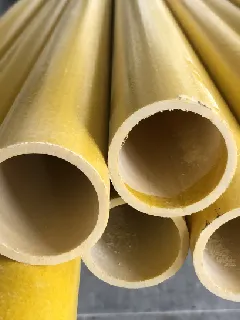loading...
- No. 9, Xingyuan South Street, Dongwaihuan Road, Zaoqiang County, Hengshui, Hebei, China
- admin@zjcomposites.com
- +86 15097380338
- Welcome to visit our website!
heavy duty bar grating
The Importance of Heavy Duty Bar Grating in Modern Construction
Heavy duty bar grating is an essential component in the construction and manufacturing industries, known for its strength, durability, and versatility. Used extensively in various applications, heavy duty bar grating provides a structural solution that meets the needs of demanding environments such as industrial plants, maintenance platforms, walkways, and heavy machinery applications.
Understanding Heavy Duty Bar Grating
At its core, heavy duty bar grating is a type of flooring or support system made from parallel bars that are welded or pressed together, creating a mesh-like structure. These bars can be fabricated from various materials, including steel, aluminum, and fiberglass, depending on the specific requirements of the application. The thickness and spacing of the bars are designed to support substantial weight while allowing for efficient drainage and ventilation—features that are critical in industrial settings.
One of the key advantages of heavy duty bar grating is its load-bearing capacity. This type of grating is engineered to withstand high loads, making it ideal for areas that experience heavy traffic or the weight of heavy machinery. Whether it is used in manufacturing plants or as support for overhead piping systems, heavy duty bar grating provides the strength necessary to maintain safety and structural integrity.
Applications in Various Industries
Heavy duty bar grating finds applications across a multitude of industries. In construction and civil engineering, it serves as an effective flooring solution for scaffolding, drainage covers, and walkways. The open design of the grating allows for debris and liquids to pass through, reducing the risk of slips and falls while ensuring proper drainage.
heavy duty bar grating

In the industrial sector, heavy duty bar grating is utilized for platforms, catwalks, and access ladders. Its non-slip surface is particularly beneficial in environments where workers are often exposed to wet or oily conditions. Moreover, heavy duty bar grating is resistant to corrosion and can be coated or treated to withstand harsh chemicals, making it suitable for use in refineries, wastewater treatment plants, and other chemically aggressive environments.
Benefits of Heavy Duty Bar Grating
One of the primary benefits of heavy duty bar grating is its lightweight nature compared to traditional flooring materials. Despite its strength, heavy duty bar grating is much lighter than concrete or steel plates, leading to easier installation and reduced labor costs. Its ease of handling also minimizes the risk of injury during installation.
Additionally, heavy duty bar grating requires minimal maintenance. The open design facilitates cleaning and reduces the accumulation of debris, which can often be a significant concern in industrial settings. For facilities looking to maintain high standards of safety and hygiene, this feature is invaluable.
The durability of heavy duty bar grating also translates to cost-efficiency over time. While the initial investment may be higher than other flooring options, the longevity and reduced upkeep needed result in lower overall lifecycle costs. Businesses can save on replacement costs and maintenance efforts, allowing for better allocation of resources.
Conclusion
In summary, heavy duty bar grating plays a crucial role in a wide range of industries, providing a solid foundation for safety and efficiency in operations. Its combination of strength, versatility, and low maintenance requirements make it an indispensable element in modern construction and industrial design. As industries continue to evolve and demand more robust solutions, heavy duty bar grating will undoubtedly remain a key player, ensuring safety and performance across challenging environments. Whether you are working in construction, manufacturing, or any heavy-duty application, the importance of high-quality bar grating cannot be overstated. Investing in heavy duty bar grating is not just a choice; it is a fundamental requirement for ensuring safety, durability, and efficiency in operations.
-
GRP Structures: The Future of Lightweight, High-Performance EngineeringNewsJun.20,2025
-
FRP Water Tank: High-Performance Storage for Corrosive and Clean Water SystemsNewsJun.20,2025
-
FRP Square Tube: The New Industry Standard for Chemical and Structural ApplicationsNewsJun.20,2025
-
FRP Pultruded Profiles: The Ultimate Choice for Lightweight Structural StrengthNewsJun.20,2025
-
FRP Handrails: The Safer, Smarter, and Stronger Choice for Modern InfrastructureNewsJun.20,2025
-
FRP Grating: The Smart Solution for Durable, Lightweight Industrial FlooringNewsJun.20,2025
-
Why Choose a Galvanized Water Tank for Your Storage NeedsNewsMay.21,2025
